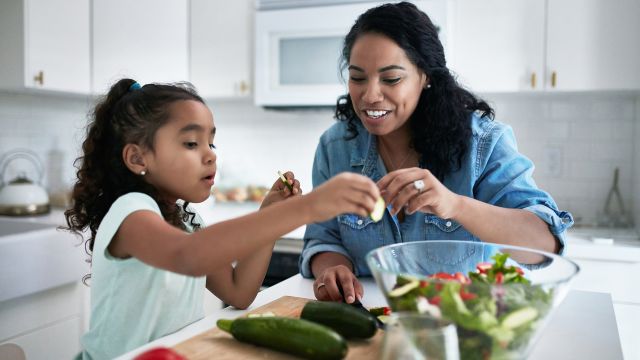Food is the most potent weapon in your fight against diabetes, says Mark Hyman, MD, author of The Blood Sugar Solution (Little, Brown and Company). Evidence shows that eating the right foods can manage your blood sugar level and, according to Hyman, even help reverse diabetes.
It's easier than you might think. Consistently tune into the following factors when choosing your foods and you'll be rewarded with stable blood sugar, insulin, and energy levels throughout the day.
Glycemic load
Glycemic load (GL) measures how much carbohydrates in a food affect your blood sugar level. (Carbohydrates is the food group that impacts blood sugar the most; protein and fat don't as much.) Factors such as fiber content, serving size and even shape come into play when the body is breaking down food into sugar molecules. The more challenging a food is to break down, the slower it digests and the more stable your blood sugar will be. Foods made with refined carbs, such as white pasta, are digested quickly and have a higher GL that causes blood sugar to rise rapidly, but foods made with complex carbs, such as whole-wheat pasta, have a lower GL that has a much smaller affect on blood sugar.
Portion size
"Excessive portion sizes can impact blood sugar," says Amy Jamieson-Petonic, RD, spokesperson for the Academy of Nutrition and Dietetics, and director of coaching at the Cleveland Clinic. A large meal means more sugar (from carbohydrates) enters the bloodstream at one time. Eating smaller portions beefed up by low GL snacks, such as nuts, keeps your blood sugar even throughout the day.
Shape of food
Food that's in its full "package," such as a whole grain, takes longer to digest than food that's been partially or fully processed. Whole barley, for instance, has a GL that's less than half that of cracked barley.
Food combinations
What you eat with your carbohydrates matters, too. "Protein and fat slow the absorption of glucose into the bloodstream, which helps prevent [insulin] spikes and drops," says Jamieson-Petonic. Pairing an apple with peanut butter or serving rice with beans and avocado can lessen the blood-sugar impact of the whole plate.
That all might sound pretty complex, but the bottom line is simple: The less processed your food and the more work your body has to do to digest it, the better it is for your blood sugar. "It's about eating real food," Hyman says. If a food's label reads like a science project filled with ingredients you don't recognize, "we shouldn't eat it," Hyman says. "If it's raised in a field, we're good."





